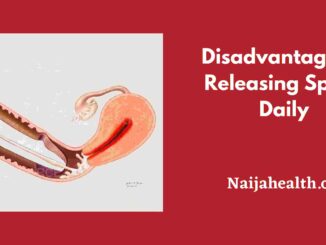
Apollo Eye Disease: Prevention, Symptoms, and Treatment
Apollo eye disease (AED) is a group of inherited eye disorders characterized by progressive vision loss and multiple eye abnormalities. AEDs are mainly caused by mutations in specific genes involved in eye development and function. The specific genes involved in AED can vary by subtype.
Although relatively rare, AEDs can have a profound impact on an individual’s vision and quality of life. Understanding this disease, its prevention, symptoms, and treatment options is important to individuals and medical professionals.
Causes and Risk Factors of Apollo Eye Disease
Apollo eye disease (AED) is mainly caused by genetic factors, specifically mutations in certain genes involved in eye development and function. These gene mutations can disrupt normal processes involved in maintaining healthy eye structure and visual function.
These factors include:
- Family history
AED tends to run in families, and people with a family history of the condition have a higher risk of developing it. Genetic counseling and testing can be beneficial for people with a family history of AED.
- Age
The onset of AED can occur at different ages, depending on the specific subtype. Some subtypes may appear during childhood or adolescence, while others may appear later in adulthood.
- Ethnic group
Several subtypes of AE have been observed to be more common in specific ethnic groups. Research has shown differences in the prevalence and mutation rates of AED-related genes among different populations.
- Exposure to environmental factors
Although the effect of environmental factors on AED is not fully understood, certain environmental exposures, such as toxins or infections, are likely to contribute to the development or progression of AED. of disease. Further research is needed to establish a definitive link.
- Lifestyle factors
Although the impact of lifestyle factors on AED is still not fully understood, maintaining good general health and adopting a healthy lifestyle can contribute to people’s overall well-being. with AEDs. This includes practices like a balanced diet, regular physical activity, avoiding smoking, and protecting your eyes from harmful ultraviolet (UV) rays.
Symptoms and Diagnosis of Apollo Eye Disease
Symptoms of Apollo eye disease (AED) can vary depending on the specific subtype and the progression of the disease.
Here are some common symptoms associated with AEDs:
- Loss of vision
Progressive vision loss is a characteristic symptom of AED. This can initially manifest as difficulty seeing small details or objects in low light. Over time, individuals may experience progressive deterioration of vision and narrowing of the visual field.
- Photophobia
Sensitivity to light, known as photophobia, is another common symptom. People with AEDs may find glare uncomfortable or painful, causing them to avoid bright environments.
- Eyeball tremor
Involuntary, rhythmic eye movements, known as nystagmus, can occur in some people with AEDs. These eye movements can be horizontal, vertical, or rotational in nature and can be made worse by visual tasks or fatigue.
- Crossed eyes
A misaligned eye, called strabismus, can be present in some cases of AEDs. Eyes may point in different directions or it may be difficult to focus on the same object.
- Lack of color vision
AEDs can also affect color vision, making it difficult to recognize or distinguish certain colors.
A diagnosis of AED includes a full evaluation by an ophthalmologist or genetic eye disease specialist. The diagnostic process may include the following:
- Medical and family history
A detailed history, including any family history of eye disease or vision problems, is important for assessing risk for AED and identifying potential genetic patterns.
- Check eyesight
A standard vision test that uses an eye chart to measure the clarity of an individual’s vision at different distances.
- Visual field test
This assesses an individual’s total peripheral vision, helping to identify any defects or limitations in the visual field.
- Eye check
A thorough eye exam, including a slit lamp examination, allows your doctor to assess the health of your eye structures and detect any abnormalities.
- Genetic testing
Genetic testing can confirm the presence of specific gene mutations associated with AE. It can help make a definitive diagnosis, determine the AED subtype, and assess the risk of transmitting the disease to future generations.
Apollo Eye Disease Prevention and Reduction (AED)
Although Apollo eye disease (AED) has a genetic basis, there are a number of prevention measures and risk reduction strategies that individuals can consider.
Here are some key risk reduction and prevention strategies:
Genetic Counseling and Testing
- Genetic counseling
If there is a family history of AED or if people are considering marriage, genetic counseling can provide valuable information about the genetic risk of AED and the testing options available.
- Genetic testing
Genetic testing can help identify specific genetic mutations associated with AEDs. It can help confirm a diagnosis, assess the risk of disease transmission, and provide personalized recommendations.
- Routine eye exams
Routine eye exams are important for early detection and intervention. Regular visits to an ophthalmologist can help identify any signs or symptoms of AED, facilitating prompt diagnosis and proper management.
Protect Eyes
- UV protection
It is important to protect the eyes from harmful ultraviolet (UV) rays. Wearing sunglasses with UV protection and wearing a wide-brimmed hat outdoors can help reduce UV exposure to the eyes.
- Eye safety
Taking precautions to prevent eye injury, such as wearing protective eyewear during activities that pose a risk of eye injury, can help maintain eye health.
Healthy lifestyle
- Balancing diet
A nutritious diet rich in fruits, vegetables, and omega-3 fatty acids can support overall eye health. Nutrients like vitamins A, C and E, along with antioxidants and zinc, are beneficial for eye health.
- Exercise regularly
Engaging in regular physical activity promotes overall health, including eye health. This can help maintain healthy blood flow to the eyes and reduce the risk of certain eye diseases.
- Avoid smoking
Smoking has been linked to various eye diseases and can increase the risk of vision loss. Quitting smoking or avoiding exposure to secondhand smoke is essential to maintaining eye health.
Practice Healthy Vision
- Proper eye care
Taking good eye hygiene measures, such as avoiding excessive eye strain, taking regular breaks in front of screens, and ensuring good lighting, can contribute to overall eye health.
- Adjust vision
People with refractive errors, such as nearsightedness or farsightedness, should wear appropriate corrective lenses or consider vision correction procedures recommended by their eye care professional.
Treatment Options for Apollo Eye Disease (AED):
Apollo Eye Disease (AED) currently has no cure. However, some treatment options are aimed at controlling symptoms, slowing disease progression, and improving quality of life for people with AEDs.
Here are some commonly used treatments:
Supportive care and support for low vision
- Supportive care
A multidisciplinary approach involving many different healthcare professionals, such as optometrists, optometrists, low vision specialists, and occupational therapists, can provide Comprehensive support for people with AEDs. They can offer advice on correcting vision changes, managing daily activities, and maximizing remaining vision.
- Low vision support
Devices such as magnifiers, telescopes, specialized glasses, and electronic vision aids can help people with AEDs make the most of their remaining vision. These supports can improve reading, mobility, and general visual function.
- Vision recovery
Vision rehabilitation programs focus on optimizing vision and teaching coping strategies to people with AEDs. These programs may include orientation and movement training, visual skills training, and activities to improve visual processing and functional vision.
Gene therapy and clinical trials
- Genetic therapy
Gene therapy has emerged as a potential treatment for a number of inherited eye diseases, including some AED subtypes. Gene therapy aims to repair or replace faulty genes that cause disease.
- Clinical tests
Participation in clinical trials and research can provide access to innovative treatments and help advance AED therapies. People with AED may consider discussing clinical trial opportunities with their healthcare providers.
Symptom management
- Medicine
Certain medications may be prescribed to control specific symptoms associated with AEDs, such as controlling eye movements (eg, with drugs that target nystagmus) or treating discomfort or eye inflammation.
- Glaucoma management
People with AEDs may have an increased risk of developing glaucoma. In the case of glaucoma, appropriate medications or surgical procedures may be recommended to control intraocular pressure and preserve vision.
- Psychological support
Coping with a progressive eye disease like AED can cause emotional and psychological challenges. Seeking support from psychologists, counselors or support groups can help individuals and their families manage the emotional impact of illness and develop effective coping strategies.
FAQs
How common is Apollo eye disease (AED)?
The incidence of Apollo eye disease (AED) is relatively rare. Because AEDs include many different subtypes, prevalence can vary depending on the specific subtype. AED is estimated to affect a small percentage of the population, with some subtypes being extremely rare. However, the exact prevalence for each subtype may not be well defined due to limited data and the rarity of the disease.
Can Apollo eye disease be prevented?
Apollo eye disease (AED) has a genetic basis and currently there is no way to prevent the development of AED. However, certain precautions and risk reduction strategies can be put in place, such as genetic counseling and testing, regular eye exams, UV protection, and maintaining a healthy lifestyle. and practice healthy visual habits.
Can Apollo eye disease be cured?
While there is no cure for Apollo’s eye disease (AED), there are several treatment options available to manage symptoms, slow disease progression, and improve quality of life for those affected by the AED. Treatments may include supportive care, low vision support, vision restoration, genetic therapy (such as gene therapy), participation in clinical trials, and symptom control by medicine.
Is Apollo Eye Disease Hereditary?
Yes, Apollo Eye Disease (AED) has an inherited or genetic component. It is mainly caused by mutations in specific genes involved in eye development and function. AED can be inherited in an autosomal recessive or autosomal dominant fashion, depending on the subtype.
Can people with Apollo eye disease keep their eyesight?
Some people with AEDs may experience gradual vision loss over time, while others may experience milder symptoms and maintain better vision. Low vision support, vision rehabilitation, and coping strategies can help individuals maximize their remaining vision and maintain functional independence.
Are there ongoing studies or clinical trials for Apollo eye disease?
Yes, research and clinical trials are currently underway to better understand Apollo eye disease (AED) and develop potential treatments. These studies aim to explore new treatments, including gene therapies, and to evaluate their safety and effectiveness. Participating in clinical trials can help people with AED access innovative treatment options and help advance AED therapies.
Conclusion
Apollo eye disease (AED) is a group of inherited eye disorders characterized by progressive vision loss and multiple eye abnormalities. Although AED currently has no cure, there are treatment options to manage symptoms, slow disease progression, and improve quality of life for those affected. Supportive care, low vision support, vision restoration, genetic therapy, and participation in clinical trials are some of the approaches used.
Risk reduction and prevention strategies include genetic counseling and testing, regular eye exams, eye protection, maintaining a healthy lifestyle, and practicing healthy vision habits. While these measures do not completely prevent AED, they can help manage risk and potentially slow disease progression.



Be the first to comment